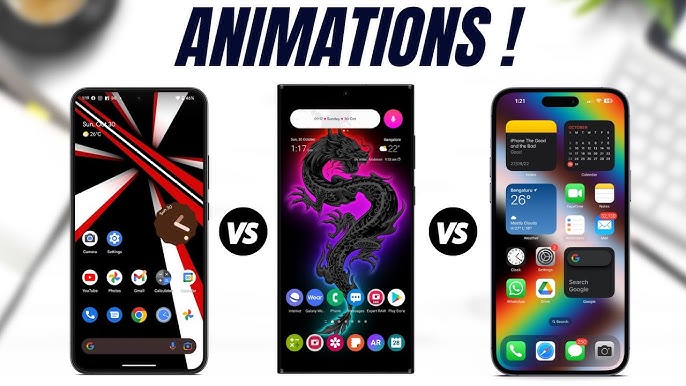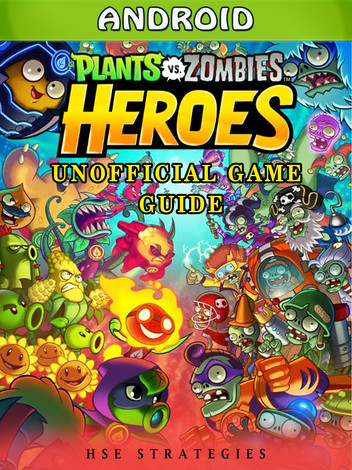
Android vs. iOS in 2024: More Than an OS, It’s a Lifestyle Choice
The Age-Old Debate Reimagined: Android vs. iOS for the Modern User
For over a decade, the “Android vs. iOS” debate has been the tech world’s most enduring rivalry. It’s a conversation that has evolved from simple spec comparisons to a deep-seated discussion about digital philosophy. Too often, these articles get bogged down in technical jargon or backend architecture, missing the point of what truly matters to the average person: the experience. This isn’t just about choosing a phone; it’s about choosing an ecosystem that will shape your daily interactions with technology. In this comprehensive guide, we’ll move beyond the code and dive into the real-world implications of this choice, focusing on the vibrant universe of Android Phones, the ever-expanding world of Android Gadgets, and the constant stream of innovation you read about in Android News. We’ll explore how each platform’s core philosophy impacts everything from personalization and hardware choice to app availability and smart home integration, helping you decide which digital lifestyle fits you best.
Section 1: The Core Philosophy: An Open Playground vs. a Walled Garden
At its heart, the difference between Android and iOS isn’t about which one has a better camera this year or a faster processor. It’s about two fundamentally different approaches to technology. Google’s Android is built on a foundation of openness and choice, while Apple’s iOS is a testament to the power of curation and control. Understanding this core distinction is the key to understanding everything else.
Android’s Open Playground: The Power of Choice
Android’s biggest strength is its diversity. Because its source code is open, any manufacturer can take it, modify it, and build a device around it. This has created an incredibly varied market of Android Phones. Do you want a flagship device with a stylus like the Samsung Galaxy S24 Ultra? A photography-focused marvel like the Google Pixel 8 Pro? A cutting-edge foldable like the OnePlus Open? Or a reliable budget phone for under $300? Android offers all of that and more. This philosophy extends to software. Don’t like the default home screen? Install a new launcher like Nova or Niagara. Want different icons? Download an icon pack. Need an app that isn’t on the Google Play Store? You have the freedom (with some risks) to “sideload” it. This approach puts the user in the driver’s seat, offering near-limitless potential for customization and control.
iOS’s Curated Experience: The Beauty of Simplicity
Apple takes the opposite approach. They control both the hardware (the iPhone) and the software (iOS). This is the “walled garden.” While this term can sound restrictive, it has significant benefits. By designing every aspect of the experience, Apple ensures a level of polish, consistency, and seamless integration that is difficult to match in the fragmented Android world. Every iPhone works essentially the same way, making it incredibly intuitive for users. The App Store is strictly vetted, which drastically reduces the risk of malware and ensures a high baseline of quality for apps. This control also allows Apple to provide software updates to all supported devices simultaneously for many years, a feat that remains a challenge for many Android manufacturers. For users who value simplicity, security, and an experience that “just works” out of the box, the curated iOS ecosystem is incredibly compelling.

Section 2: The Ecosystem in Action: Hardware, Gadgets, and Integration
A smartphone doesn’t exist in a vacuum. It’s the central hub of a personal tech ecosystem that includes watches, headphones, tablets, and smart home devices. Here, the philosophical differences between Android and iOS become tangible realities.
The Sprawling Universe of Android Phones and Gadgets
The sheer variety of hardware is where the Android ecosystem truly shines. The constant stream of Android News is filled with announcements of new devices from dozens of manufacturers, each trying to innovate in a different way. This competition drives progress and provides consumers with unparalleled choice.
- Phones for Every Niche: Beyond the flagship Samsungs and Pixels, you have gaming-centric Android Phones like the ASUS ROG Phone with built-in triggers, or rugged phones from companies like CAT built for construction sites. This diversity means you can find a phone perfectly tailored to your specific needs and budget.
- A Galaxy of Gadgets: The world of Android Gadgets is equally diverse. You can pair a Samsung phone with a Galaxy Watch, a Pixel phone with a Pixel Watch, or mix and match with wearables from Fossil, Mobvoi, or Garmin. For tablets, you have options from Samsung’s high-end Galaxy Tab S series to affordable alternatives from Lenovo. This allows you to build your ecosystem piece by piece, often at more accessible price points.
- Integration and Interoperability: While not always as seamless as Apple’s ecosystem, Google has made huge strides with features like Fast Pair for easy Bluetooth connections and Nearby Share for file transfers between Android devices and Chromebooks. The open nature also means better interoperability with non-Google products, especially in the smart home space where Matter compatibility is becoming standard.
The iPhone and its Tightly-Knit Kingdom
Apple’s ecosystem is less a sprawling universe and more a pristine, well-governed kingdom. The number of products is smaller, but their ability to work together is second to none.
- The iPhone as the Centerpiece: There is only one line of iPhones each year, simplifying the choice. The focus is on incremental, polished improvements to a winning formula.
- Seamless Symbiosis: This is Apple’s magic trick. Answering a call on your Apple Watch, having your AirPods instantly switch from your iPhone to your MacBook, or copying text on your phone and pasting it on your iPad is an incredibly smooth and intuitive experience. This deep integration, known as “Continuity,” is a major reason why users stay locked into the Apple ecosystem. It’s a powerful, frictionless experience that Android’s more fragmented world struggles to replicate perfectly.
Section 3: The User Experience Showdown: Daily Life with Each OS
How do these differences play out in your day-to-day life? Let’s break down some key areas of the user experience, from personalization to the very apps you can use.
Customization and Personalization: Expressing Yourself Digitally
This is arguably Android’s biggest win. An Android user can fundamentally change the look and feel of their device’s software.
Real-World Scenario: Imagine you want a hyper-minimalist, text-only home screen to reduce distractions. On an Android phone, you can install a third-party launcher like Niagara Launcher, choose a monochrome icon pack, and place widgets exactly where you want them. You can even change the default browser, email client, and messaging app to alternatives you prefer.
On iOS, personalization has improved significantly with home screen widgets and the App Library, but it operates within Apple’s strict design framework. You cannot replace the core launcher or change the fundamental grid-based layout of your home screens. The level of deep, system-wide customization available on Android is simply not possible.

App Ecosystems and Sideloading: Gates and Gatekeepers
Both the Google Play Store and the Apple App Store have millions of apps. For 99% of users, every major app they need is available on both platforms. The difference lies at the fringes. The Play Store is slightly more lenient in its review process, allowing for a wider variety of apps, including system utilities and emulators that Apple would not permit.
Furthermore, Android allows “sideloading”—installing apps from outside the official store. This is a powerful feature often highlighted in Android News, especially for enthusiasts.
Case Study: A retro gaming enthusiast wants to play classic console games on their phone. On Android, they can legally download an emulator app like RetroArch and play game files they own. This is not possible on a standard iPhone through the App Store. Sideloading also allows access to app stores like the Amazon Appstore or beta versions of apps directly from developers. However, this freedom comes with a security risk, as installing apps from untrusted sources can expose your device to malware.
The “Default” Experience and AI Integration
Out of the box, both platforms offer a polished experience, but their assistants and AI integrations reflect their core philosophies. Google Assistant on Android, particularly on Pixel phones, is deeply integrated with Google’s vast knowledge graph. It excels at contextual awareness and proactive suggestions. Features like Call Screen (which screens unknown callers for you) and Magic Eraser (which removes unwanted objects from photos) showcase Google’s AI prowess in practical, useful ways.
Siri on iOS is excellent at on-device tasks—setting timers, sending messages, controlling smart home devices via HomeKit—and is deeply focused on user privacy. While it has improved, it often lags behind Google Assistant in its ability to answer complex web-based queries or understand nuanced conversational context.
Section 4: Making the Choice: Which Ecosystem Is Right for You?
There is no single “best” operating system. The right choice depends entirely on your priorities, technical comfort level, and how you plan to use your device.
Who Should Choose Android?
You should lean towards Android if you are:
- The Tinkerer or Power User: You love to customize, optimize, and have full control over your device’s software and file system.
- The Budget-Conscious Buyer: You want the best possible hardware for your money. The variety of Android Phones means there are excellent options at every price point, from under $200 to over $1500.
- The Google Ecosystem Devotee: You are heavily invested in Google services like Gmail, Google Drive, Google Photos, and Google Assistant. The integration on Android is naturally deeper and more seamless.
- Someone Who Values Hardware Choice: You want a specific feature like a built-in stylus, a foldable screen, or a massive battery that may not be available on an iPhone.
Who Should Choose iOS?
You should lean towards iOS if you are:
- The “It Just Works” User: You prioritize simplicity, ease of use, and a consistent experience across all your devices without needing to configure anything.
- The Privacy and Security-Minded Individual: While Android is very secure, Apple’s strict app vetting and control over the ecosystem provide an unparalleled level of out-of-the-box security and a strong reputation for user privacy.
- The Apple Ecosystem Loyalist: You already own a Mac, iPad, or Apple Watch. The seamless continuity features between these devices are a significant and compelling advantage.
- Someone Who Values Long-Term Support: iPhones consistently receive software updates for five to seven years, which is longer than most Android phones, ensuring they stay secure and get new features for a long time.
Conclusion: A Choice of Personal Philosophy
The Android vs. iOS debate has transcended a simple comparison of features. It’s a choice between two distinct digital lifestyles. Android offers a world of unparalleled choice, customization, and freedom, embodied by its vast array of Android Phones and Android Gadgets. It invites you to be the architect of your own digital experience. iOS, in contrast, offers a world of curated simplicity, seamless integration, and robust security. It provides a polished, predictable, and powerful experience where every element is designed to work in perfect harmony. Neither approach is inherently superior; they simply cater to different priorities. The best advice is to consider what you value most: the boundless freedom of an open playground or the elegant simplicity of a pristine, walled garden. Your answer will lead you to the ecosystem that is truly right for you.



